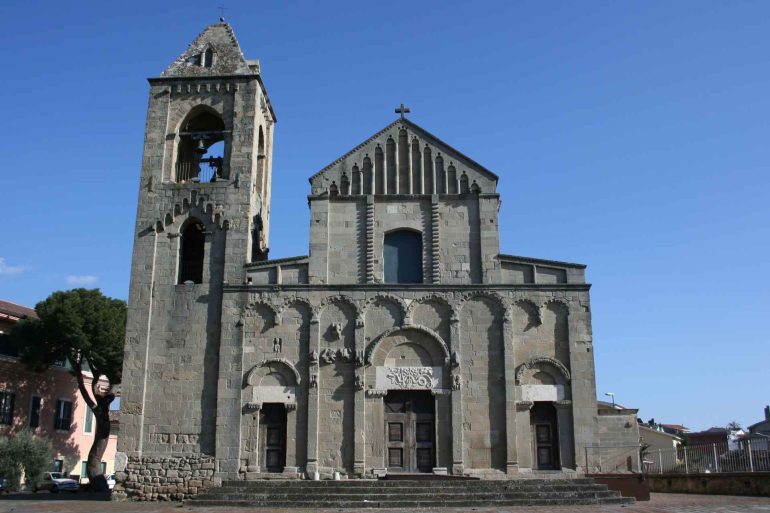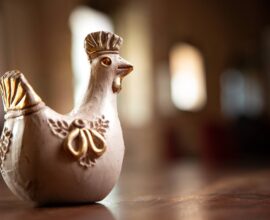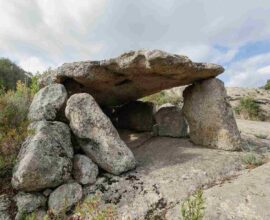Cathedral of San Pantaleo: one of the most important medieval churches in Sardinia
The Cathedral of San Pantaleo is a splendid example of a Romanesque church
The Cathedral of San Pantaleo is one of the most important monuments of Romanesque-Pisan art in Sardinia. It is located in Dolianova, in the historical territory of Parteòlla.
One of the main Romanesque monuments in Sardinia is the Cathedral of San Pantaleo. It is located in Dolianova, in the south-east of the island, a few kilometers from Cagliari, in a square that you access via an arch from Via Vescovado. It was built in sandstone between the 12th and 13th centuries by the workers of Santa Maria di Bonarcado. Then, it was inaugurated on December 8, 1289, in the presence of Mariano II of Arborea.
Today the church is located in the historic center of the town, a site where the presence of Christians dates back to the 5th-6th century. Evidence of this was the discovery, in the presbytery below the altar, of a baptismal font with early medieval decorations, and a middle Byzantine marble pillar with phytomorphic motifs, dating from the second half of the 10th century.
Its architectural grandeur, the numerous decorations, and the paintings inside make it unique among the Romanesque churches of Sardinia. And they are the reason why it was one of the most important religious buildings during the Middle Ages.
The plan of the building is longitudinal with three naves and a single apse. The wooden roof results from a modification of the original project which, as the presence of sturdy pillars suggests, included stone vaults. To the left of the facade stands the bell tower, while on the north side, next to the main entrance, there is a kind of aedicule or porch that was probably placed in front of an entrance which is now walled up. This element is composed of two columns supporting a Roman sarcophagus. Two other columns rise from the sarcophagus, supporting a pointed arch vault.
The facade of the Cathedral of San Pantaleo mixes two different styles. In the lower part the Pisan-Romanesque prevails. There, we see pilasters surmounted by semicircular arches decorated with zoomorphic subjects, geometric motifs and mythological animals that recall the illustrations of bestiaries. The highest part shows Gothic influences, with a large window and a triangular termination decorated with columns. The facade is completed by the architrave of the entrance portal covered by a Roman marble slab depicting a snake among the reeds.
Inside the church, the capitals decorated with scenes from the New Testament and the Gothic one with “crochet” leaves are noteworthy. The medieval frescoes in the apse are also very fascinating. One is the great Arbor Vitae on the right side, from the 14th-century school. Another is the Retablo di San Pantaleo, attributed to a Spanish artist of the Majorcan school, painted between the end of the 15th and early 16th centuries.
Since the 19th century, the church of San Pantaleo has been studied to investigate the archaeological aspects in relation to the territory, as well as the historical-artistic ones. Among the most important scholars was Giovanni Spano, who carried out, with Filippo Vivanet and Filippo Nissardi, the first excavations that in the 19th century brought to light Nora and the archaeological park of Pula.
How to reach the cathedral of San Pantaleo in Dolianova?
From Cagliari, to reach the cathedral of San Pantaleo you have to take the SS387 and then turn right onto the SP14. From there you can access the town of Dolianova.
Then, continue on via Cagliari for 3.3 kilometers, passing Piazza Brigata Sassari and continue on Corso Repubblica until the intersection with Via Vescovado. At that point, take Via Vescovado and, after about fifty meters, turn left into Via Cattedrale. The Church is there. In front of the main entrance there is a large car park and a pedestrian ramp allows access to the right of the facade. Entrance to the church is free.
Do you want to visit the Cathedral of San Pantaleo and live a dream vacation in a true paradise? Discover the Forte Village Resort in Sardinia.






